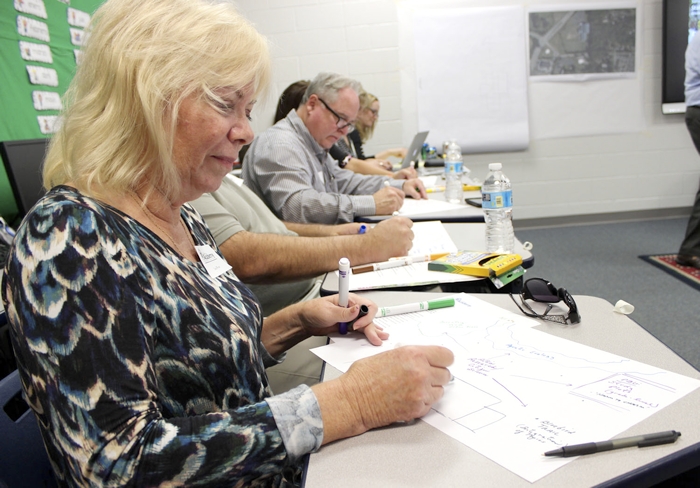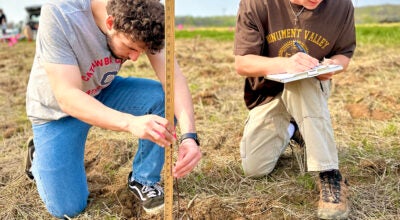Group gathers at Salisbury Academy to brainstorm
Published 12:00 am Thursday, October 15, 2015

- Submitted photo Lisa Wear, coordinator for the environmental education certification program at Catawba College, draws a big-picture map of the elements she envisions Salisbury Academy’s outdoors space should include.
By Lizzy Roy
Salisbury Academy
A roundtable of Rowan County leaders convened at Salisbury Academy last week to brainstorm and lay the groundwork for Salisbury Academy’s strategic plan for an outdoor campus design. A part of the academy’s Project Green Space initiative, the strategic plan will provide outdoor environments for instruction and play, environmental study and inquiry-based science.
The focus group was comprised of 26 participants ranging widely in expertise from architects to physical therapists to environmental experts, and was led by Professor Robin Moore and his Natural Learning Initiative Department from N.C. State.
“We’re creating a space where the genetic endowment of each individual can flower,” said Moore, who with his team has created a variety of natural learning environments at schools in the U.S. and Europe. “Nature is the tie between subject matters, an idea about learning that is beyond individual subject matters.”
The four-hour discussion began with a creative exercise, with each participant drawing their visions for the Salisbury Academy outdoor space with markers on a legal-sized sheet of paper. Some participants drew thought maps while others depicted their visions with imagery.
Lisa Wear, coordinator for the environmental education certification program at Catawba College, drew a big-picture map of the elements that the outdoors space should include and inform upon.
“One of the goals of environmental education is to engage students in action research so that they understand conservation in real-world applications,” said Wear.
Over the course of the afternoon, proposed ideas for the future outdoor space included an outdoor amphitheater, wooded areas for discovery, walking trails, gardens and age-appropriate elements such as variable walking surfaces and natural climbing areas.
Through the discussion, a mission and vision for the project took shape. Participants aimed to create a place where children are confident, connected to nature and comfortable taking risks. The Salisbury Academy outdoors space of the future will be an experience that nurtures critical thinking about global environmental issues and produces stewards of the earth.
The benefits of the outdoors experience will carry over to indoors learning as well, explained Lane Wallace, sustainability consultant. Wallace sited a major study which proved a 20 to 26 percent faster learning rate in students in naturally-lit learning spaces with direct views of the outside.
Kim Petty, third-grade teacher for Salisbury Academy said that her students are living examples of these studies. Her students currently spend 40 minutes per day outside, and Petty would like to grow that number substantially.
“Kids do best outside,” said Petty. “I get very excited about what can happen out there.”
At the close of the meeting, Moore shared that the Salisbury Academy focus group was one of the most idea-filled and productive sessions he has experienced in his career. Moore’s team from the Natural Learning Initiative will compile a report and outline for the strategic plan in the coming months, as well as provide a cost estimate for the projects ahead.
Among the round-table participants eager to see the plan take shape is Sandy Jordan, junior kindergarten teacher for Salisbury Academy.
“It’s all about connecting children with nature and growing their love for the natural world,” said Jordan. “We can teach them to care for their world, but they’re not going to do it unless they love it.”


